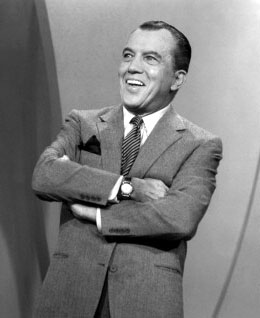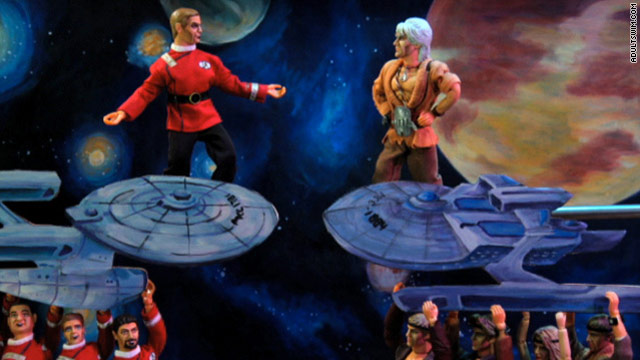Emmy Award-winning writer, producer and director Ken Levine will make a return visit on the next edition of TV CONFIDENTIAL, airing Sept. 16-19 at the following times and venues:
Share-a-Vision Radio San Francisco Bay Area
Friday 9/16
7pm ET, 4pm PT
10pm ET, 7pm PT
Click on the Listen Live button at
KSAV.org Use the TuneIn app on your smartphone and type in KSAV
Hear us on the
KSAV channel on
CX Radio Brazil Hear us on your cell phone or landline number by dialing 712-432-4235
Indiana Talks Marion, IN
Saturday 9/17
8pm ET, 5pm PT
Sunday 9/18
6pm ET, 3pm PT
Click on the player at
IndianaTalks.com or use the TuneIn app on your smartphone and type in Indiana Talks
KSCO-AM 1080 San Jose, Santa Cruz and Salinas, CA
KOMY-AM 1340 La Selva Beach and Watsonville, CA
Sunday 9/18
9am ET, 6am PT
Also streaming at
KSCO.comKHMB AM-1710
KHMV-LP 100.9 FM Half Moon Bay, CA
Sunday 9/18
9pm PT
Monday 9/19
Midnight ET
Click on the Listen Live button at
KHMBRadio.comRadioSlot.com San Francisco, CA
Monday 9/19
10pm ET, 7pm PT
with replays Tuesday thru Friday at 10pm ET, 7pm PT
Click on the Talk Slot button at
RadioSlot.comPWRNetwork Ann Arbor, MI
Various times throughout the week
on
the Entertainment Channel at
PWRNetwork.com and the
PWR channel on
TuneIn
The Emmy Award-winning writer, producer, and director of such classic shows as
M*A*S*H, Cheers, Frasier, The Simpsons and
Everybody Loves Raymond, Ken Levine is also an award-winning radio host and former Major League Baseball broadcaster for the Baltimore Orioles, San Diego Padres and the Seattle Mariners. If you follow baseball on any level, you know that the game, in many ways, is a reflection of life itself. Ken takes that idea a step further in
Going Going Gone, a new play that explores our need to be remembered in a world that focuses on celebrating milestones. Though set against the backdrop of sports,
Going Going Gone has elements that will remind you of Norm, Cliff and some of the other barflies on
Cheers. We’ll ask Ken about that, plus we’ll talk about the influence of Garry Marshall early in his writing career, what Vin Scully mean to him personally (and to baseball fans in general), and more. Ken Levine joins us in our second hour.


If you listen to us in Los Angeles, or are planning a trip to L.A. during October and would like to take in a night at the theatre,
Going Going Gone will be performed on Saturdays and Sunday at the Hudson Guild Theatre, 6539 Santa Monica Blvd. in Los Angeles beginning Oct. 1 and continuing through Nov. 6. For tickets and more information, call (323) 960-5521 or go to
www.plays411.com/gone.
Our first hour will include highlights from our January 2015 conversation with actor, author and philanthropist
Hugh O’Brian (
The Life and Legend of Wyatt Earp, The Shootist, Hugh O’Brian… or What’s Left of Him).
Plus, and speaking of Vin Scully, with the Hall of Fame broadcaster
winding down his storied career as the voice of the Los Angeles Dod... later this month, we will mark the occasion by playing an excerpt from our three-part tribute to Scully’s early career, including highlights from his work in 1957, the final season of the Brooklyn Dodgers.
TV CONFIDENTIAL: A radio talk show about television
Fri 7pm ET and PT on
Share-a-Vision Radio, KSAV.org and
CX Radio Brazil Sat 8pm ET, 5pm PT and Sun 6pm ET, 3pm PT on
Indiana Talks Sun 9am ET, 6am PT
KSCO-AM 1080 (San Jose, Santa Cruz and Salinas, CA)
Sun 9am ET, 6am PT
KOMY-AM 1340 (La Selva Beach and Watsonville, CA)
Sun 9pm PT, Mon Mid ET on
KHMB-AM and FM (Half Moon Bay, CA)
Mon 10pm ET, 7pm PT on
The Radio Slot Network Replays various times throughout the week on
the Entertainment Channel at
PWRNetwork Tape us now, listen to us later, using
DAR.fm/tvconfidential Also available as a podcast via
iTunes,
FeedBurner and now on your mobile phone via
Stitcher.com Follow us online at
www.tvconfidential.net Follow us now on Twitter:
Twitter.com/tvconfidential Like our Fan Page at
www.facebook.com/tvconfidential If you listen to TV CONFIDENTIAL, and like what you’ve heard, please consider supporting our efforts by
becoming a patron of our show through Patreon. It’s easy to do, it does not cost much, plus you can receive
some cool rewards (such as coupons that will allow you to download up to six free programs every month from the
TV CONFIDENTIAL Archives store). For more information, please visit
www.Patreon.com/tvconfidential... and thanks!















